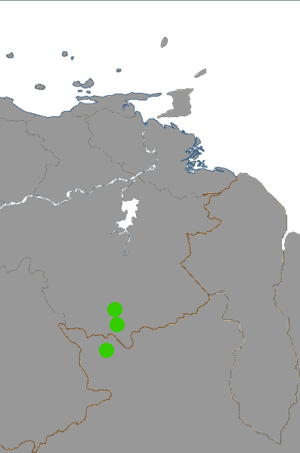Arutani–Sape languages
| Arutane–Sape | |
|---|---|
| Kalianan | |
| Geographic distribution | Brazil–Venezuela border |
| Linguistic classification | Proposed language family |
| Subdivisions | |
| Glottolog | None |
 Documented location of Arutani–Sapé languages, the two most southern spots are Arutani villages, the northern one is Sapé location. | |
The Arutani–Sape, also known as Awake–Kaliana or Kalianan, are a proposed language family[1] that includes two of the most poorly documented languages in South America, both of which are nearly extinct. They are at best only distantly related, but Kaufman (1990) finds the connection convincing. However, Migliazza & Campbell (1988) maintain that there is no evidence for linking them.[2] The two languages are,
- Arutani[3] (also known as Aoaqui, Auake, Auaque, Awake, Oewaku, Orotani, Uruak, Urutani)
- Sape[4] (also known as Caliana, Chirichano, Kaliana, Kariana)
Kaufman (1990) states that a further connection with Maku of Roraima is "promising".
See also
Notes
- ↑ Weinstein, Jay A. (2005-02-28). Social and Cultural Change: Social Science for a Dynamic World. Rowman & Littlefield. p. 94. ISBN 0-7425-2573-2.
- ↑ Ernest Migliazza & Lyle Campbell, 1988. Panorama general de las lenguas indígenas en América
- ↑ Moseley, Christopher (2007-04-23). Encyclopedia of the world's endangered languages. Routledge. p. 177. ISBN 978-0-7007-1197-0.
- ↑ Moseley, Christopher (2007-04-23). Encyclopedia of the world's endangered languages. Routledge. p. 164. ISBN 978-0-7007-1197-0.
References
- Harald Hammarström, 2010, 'The status of the least documented language families in the world'. In Language Documentation & Conservation, v 4, p 183
This article is issued from
Wikipedia.
The text is licensed under Creative Commons - Attribution - Sharealike.
Additional terms may apply for the media files.